 Have you ever compared your printer to your wallet and wondered, “Why is printer ink so expensive?” You’re not alone. It’s one of those modern-day mysteries that can leave you scratching your head. It is often the case that a single cartridge costs just as much or more than the printer itself. How did we get here? And is there a way around it? Let’s dive into this overpriced pool of ink and find out.
Have you ever compared your printer to your wallet and wondered, “Why is printer ink so expensive?” You’re not alone. It’s one of those modern-day mysteries that can leave you scratching your head. It is often the case that a single cartridge costs just as much or more than the printer itself. How did we get here? And is there a way around it? Let’s dive into this overpriced pool of ink and find out.
Why Is Printer Ink So Expensive?
From hidden costs to clever business tactics, discover the truth behind pricey printer ink.
-
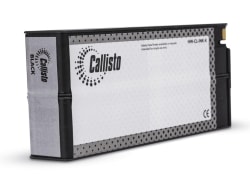 NeuraLabel Callisto Black Ink SKU: HW-CL-INK-K$310.00
NeuraLabel Callisto Black Ink SKU: HW-CL-INK-K$310.00
FREE SHIPPING over $199*
Orders before 12PM EST usually Ship Same Business Day -
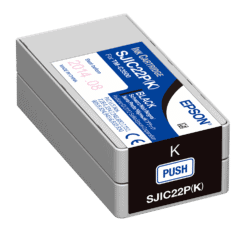 Epson ColorWorks C3500 Black Ink Cartridge SJIC22(K) for Epson C3500 SKU: C33S020577 GTIN: 4988617161689$24.00
Epson ColorWorks C3500 Black Ink Cartridge SJIC22(K) for Epson C3500 SKU: C33S020577 GTIN: 4988617161689$24.00
FREE SHIPPING over $199*
Orders before 12PM EST usually Ship Same Business Day -
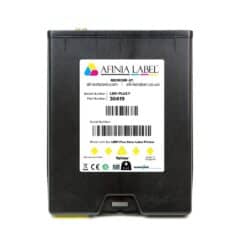 Afinia L801 PLUS Yellow Ink Cartridge SKU: 30419 GTIN: 678621140230$260.00
Afinia L801 PLUS Yellow Ink Cartridge SKU: 30419 GTIN: 678621140230$260.00
FREE SHIPPING over $199*
Orders before 12PM EST usually Ship Same Business Day
The Engineering Is Complicated
You’d think printer ink is just colored liquid, right? Not quite. Printer ink is a marvel of engineering. It’s designed to dry instantly, resist smudging, and deliver precise colors at microscopic levels. That level of precision takes advanced technology, which doesn’t come cheap. Manufacturers invest millions in perfecting the consistency and performance of ink.
You’re Paying Off Your Printer
Ever noticed how cheap printers can be? That’s because manufacturers often sell them at a loss. The real money comes from ink sales. This “razor and blades” model makes money by selling cheap printers and making money from ink refills. This means every time you replace a cartridge, you’re helping the company recover the cost of the printer itself.
Lots of Ink Gets Wasted
If you thought you were getting every last drop of ink in your cartridge, think again. Printers often require a large amount of ink for maintenance purposes such as cleaning the print head. Some cartridges even lock up before they’re truly empty, forcing you to replace them sooner than necessary. This waste increases your overall printer ink cost over time.
Ink Research and Development
Developing ink isn’t as simple as mixing food coloring with water. It involves years of R&D to create ink that resists fading, withstands various temperatures, and maintains color accuracy. As an indirect consequence of these costs being passed on to consumers, ink prices continue to rise.
You Pay for the Best
Would you rather print a crisp, smudge-free photo or end up with streaks and blotches? It is important to use high-quality ink to achieve the best results. It’s formulated for different paper types and printing needs, adding to its price tag. This is why printer ink prices can vary so drastically depending on the brand and printer model.
Supply and Demand
There aren’t a lot of options when it comes to ink cartridges. A few major brands dominate, allowing them to keep prices high. Since you can’t use just any ink in your printer, you’re stuck paying what they ask. The lack of competition directly impacts how much printer ink costs.
Printer Cartridges Are Built to Fail
Are you ever frustrated by toner cartridges that run out just when you need them most? Some printers use chips that block refills, forcing you to buy new cartridges instead of refilling old ones. This practice ensures a steady demand, increasing printer ink costs.
Costs of R&D for proprietary technologies
It is not universal for ink cartridges to work. Each printer brand has its own proprietary design, requiring specific formulations. This customization takes research and investment, which gets factored into the final price tag.
R&D Costs to Prevent Competition
It’s no secret that printer companies don’t want third-party manufacturers making cheaper ink. That’s why they invest heavily in anti-counterfeit technology, special chips, and legal battles to maintain their monopoly. The result? High costs for genuine ink.
Razor and Blades Business Model
It is the same pricing strategy that companies such as Gillette use for razors and blades. Printers are like razors; ink is like expensive blades you constantly buy. This pricing trick has been in play for years, keeping printer ink prices artificially high.
Ensure the Best OEM Quality
Original Equipment Manufacturer (OEM) ink is designed to work perfectly with your printer. It prevents clogs, leaks, and quality issues. While third-party ink options exist, they often don’t deliver the same performance, forcing you to stick with costly OEM cartridges.
Environmental Concerns
Recycling printer cartridges sounds great, but the reality is more complex. Many cartridges end up in landfills, and creating eco-friendly alternatives increases manufacturing costs. Companies often justify high prices by pointing to sustainability efforts, but the savings rarely trickle down to consumers.
Alternative to Expensive Printer Ink and Toner
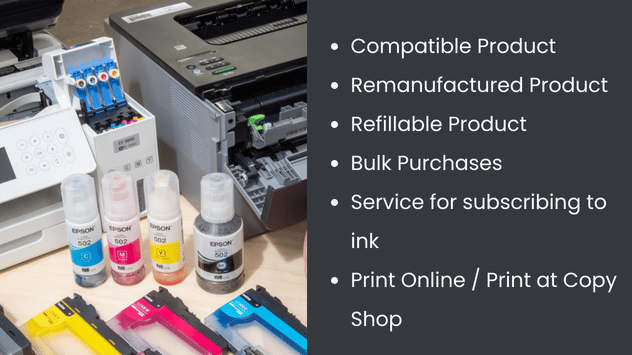
Get alternative tips on how to save money on printer ink and toner.
Compatible Product
Compatible cartridges are a third-party alternative to original cartridges that work with your printer at a fraction of the cost. These cartridges often deliver comparable performance but at a much lower price than OEM options.
Remanufactured Product
The remanufactured cartridge is an OEM cartridge that has been cleaned, refilled, and tested to ensure its performance. It is more environmentally friendly than brand-new cartridges and can be used instead.
Refillable Product
Some printer cartridges can be manually refilled with ink using refill kits. This process reduces costs significantly, but it can also result in messy processes that require careful handling.
Bulk Purchases
Buying ink in bulk can save much money in the long run. Ink cartridges are often discounted when purchased in multiple packs, resulting in a lower overall price.
Service for subscribing to ink
Many printer manufacturers now offer ink subscription services. For a monthly fee, you pay a fee, and they send new cartridges as needed. This helps reduce the cost per page and avoids unexpectedly running out of ink.
Print Online / Print at Copy Shop
It might be cheaper to use an online printing service or visit a local copy shop rather than maintaining a personal printer for occasional printing needs.
How To Fix Dried Ink Cartridges With Nozzle Techniques
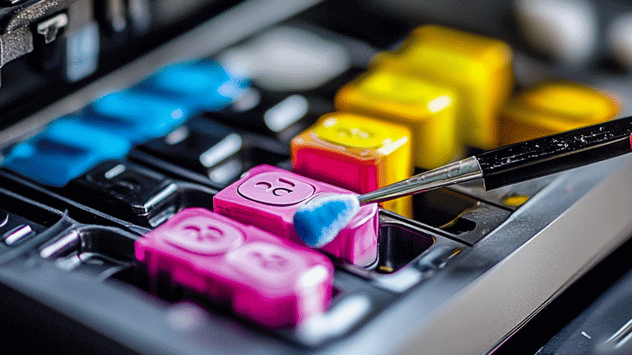
If your ink cartridge has dried out, soak the nozzle in warm water for a few minutes. This can help dissolve clogged ink and restore flow. Another trick is using a lint-free cloth with rubbing alcohol to clean the nozzle, ensuring smoother printing.
Other Ways To Combat Expensive Ink and Toner
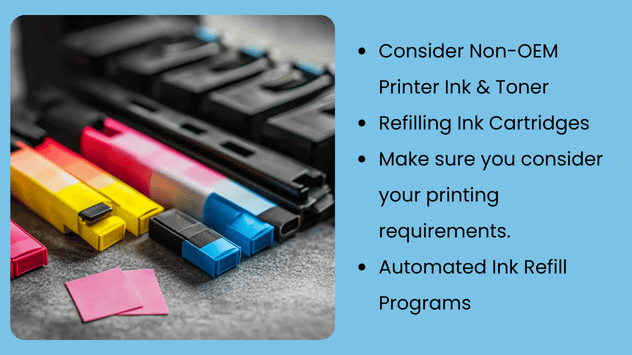
Smart printing, smarter savings—explore budget-friendly ink solutions.
Consider Non-OEM Printer Ink & Toner
Buying third-party ink and toner cartridges often results in significant cost savings compared to OEM versions. Quality depends on the manufacturer, but many third-party alternatives perform just as well as brand-name products.
Refilling Ink Cartridges
Using a refill kit allows you to reuse your cartridges unlimitedly. This method saves money and reduces waste, but it requires patience and precision to avoid leaks and messes.
Make sure you consider your printing requirements.
If you print various types of documents, consider the type of printer you need before purchasing one. If you mostly print text documents, you may be better off investing in a laser printer in the long run.
Automated Ink Refill Programs
Some printer manufacturers offer automated ink replenishment services, sending cartridges before you run out. Participating in these programs is free, and the format is convenient.
Additional Tips for Saving Printer Ink Toner
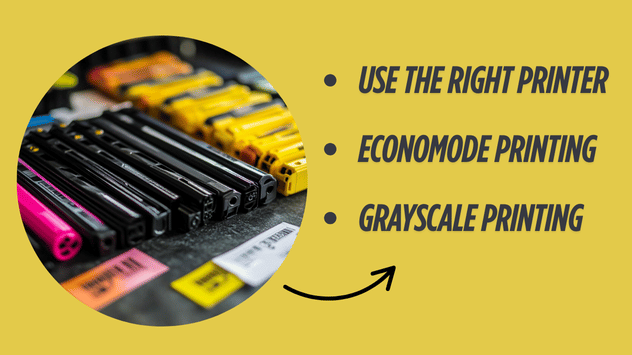
The following tips can help you save printer ink toner:
Use the Right Printer
A laser printer differs from an inkjet printer in terms of its purpose. If you print frequently, a laser printer with toner cartridges might save you more money over time.
EconoMode Printing
The most common printer mode is the draft or economy mode, which uses less ink. This is ideal for printing internal documents or anything that doesn’t require high-quality output.
Grayscale Printing
If you don’t need color, print in grayscale to save your color ink for when it’s genuinely needed.
Why Is Toner So Expensive?

Toner cartridges, like ink cartridges, come with a hefty price tag due to manufacturing costs, proprietary technology, and high-quality formulation. Toner powder is finely milled for precision printing, and laser printers require complex engineering to function correctly. Just like ink, toner is priced based on supply and demand, R&D investments, and manufacturer pricing strategies.
Where Can I Get Printer Inks?
Looking for reliable printer ink for all major brands? TCS Digital Solutions has you covered. We supply high-quality ink for Afina, Primer, Epson, Quicklabel, and Trojan Label printers. Whether you need standard or specialty inks, we provide cost-effective solutions without compromising quality.
-
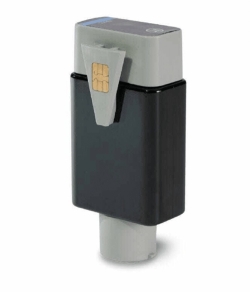 Primera LX3000 Dye Ink Tank, Cyan SKU: 053004$66.95
Primera LX3000 Dye Ink Tank, Cyan SKU: 053004$66.95
FREE SHIPPING over $199*
Orders before 12PM EST usually Ship Same Business Day -
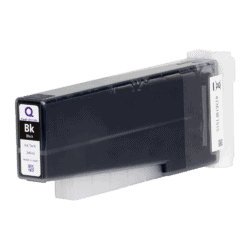 Kiaro! 200 & QuickLabel QL-120 Black Ink SKU: 14731204$255.00
Kiaro! 200 & QuickLabel QL-120 Black Ink SKU: 14731204$255.00
FREE SHIPPING over $199*
Orders before 12PM EST usually Ship Same Business Day -
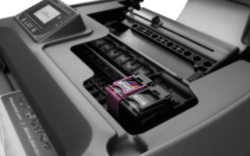 Afinia L301 Tri Color Ink Cartridge SKU: 26548 GTIN: 678621140216$51.00
Afinia L301 Tri Color Ink Cartridge SKU: 26548 GTIN: 678621140216$51.00
FREE SHIPPING over $199*
Orders before 12PM EST usually Ship Same Business Day
Conclusion
Printer ink is expensive for various reasons—complex engineering, market control, business strategies, and proprietary technology all contribute to the high price tag. While alternatives exist, printer companies work hard to maintain their grip on the ink market, keeping costs high for consumers. Those seeking more affordable options may consider alternative suppliers, such as TCS Digital Solutions.Have More Questions Related to Printer Inks? Contact our support team via email at orders@tcsdigitalsolutions.com or call (678) 824-2304 or +1 (762) 208-6985 to get answers to all your questions. The TCS Digital Solutions Expert Support Team is happy to assist you. To learn more about printer ink, visit our blog section and find answers to all your questions.
FAQsWhat Are Printer Inks?
Inkjet printers use specially formulated liquids to produce text and images on paper. These inks dry quickly and produce vibrant colors.
What Does Printer Ink Cost?
Ink for different brands and models is different in price. Depending on the printer type and ink quality, a single cartridge can range from $20 to over $100.



